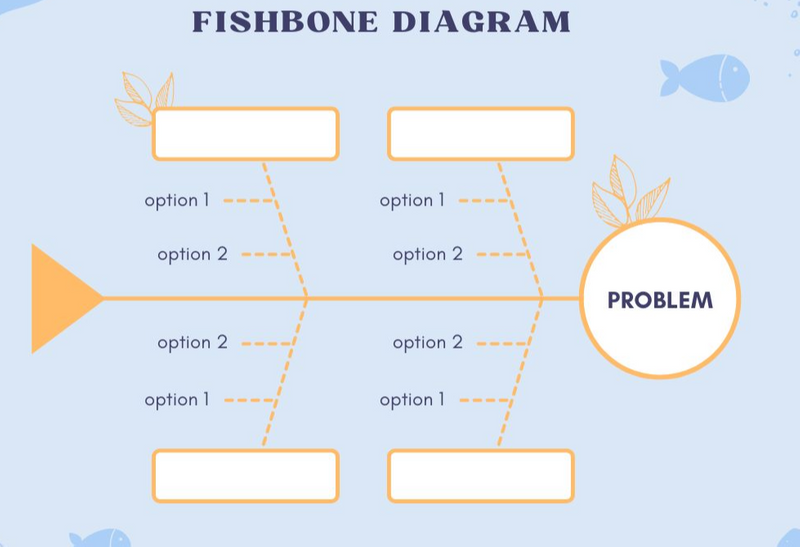
This logo isn't an ad or affiliate link. It's an organization that shares in our mission, and empowered the authors to share their insights in Byte form.
Rumie vets Bytes for compliance with our
Standards.
The organization is responsible for the completeness and reliability of the content.
Learn more
about how Rumie works with partners.
You're going about your day as usual when all of a sudden your cell phone shuts off unexpectedly...AGAIN! It's the 3rd time it's happened this month. 😣
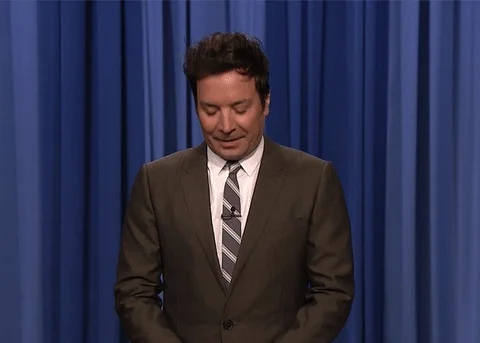
What should you do? Just restart it and hope for the best? Or try to get to the bottom of the problem?
If you want to find out the real problem and really fix it, you'll need to conduct a root cause analysis.
What is a Root Cause Analysis?
It's when you analyze a problem to find the underlying cause.
Knowing what caused a problem helps you prevent it from happening again.
Many large industries and organizations use root cause analyses as part of their business practices. Using it effectively can prevent harm and even save lives!

For example, when a surgery goes wrong at a hospital, doctors and staff gather afterwards to analyze what happened and make changes so that future surgeries go better.
Root cause analysis can also be helpful for you at work and in your daily life.
Quick Quiz!
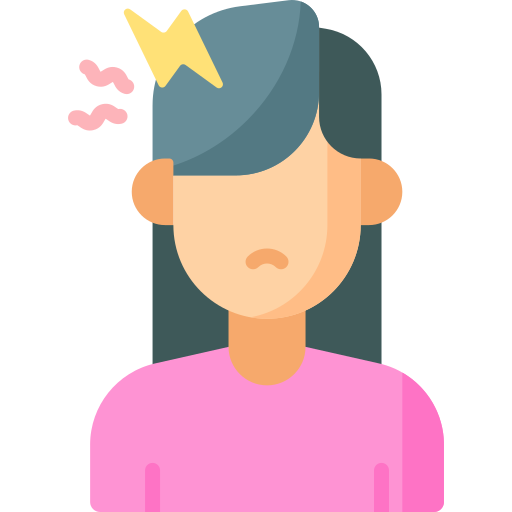
Mara gets a headache around 3 PM several days a week. When she takes an aspirin, it goes away. She decides to take an aspirin at 2 PM every day to fend off the upcoming headache.
Quiz
Did Mara conduct a root cause analysis in regards to her headaches?
Mara simply tried to ward off potential headaches by taking an aspirin before the headache starts. While this might work, she doesn't get headaches every day so it's probably not a great solution, and it doesn't get to the cause of the headaches. To conduct a root cause analysis, Mara would need to find out what's causing the 3 PM headaches. This would be helpful because she could potentially take steps to avoid getting them in the first place.
The End Goal
Example
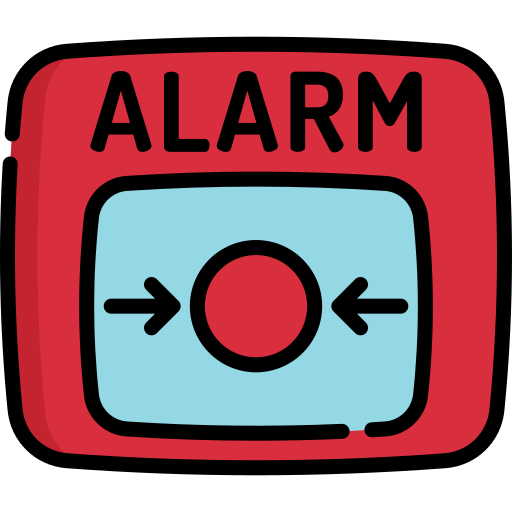
Problem: The fire alarm outside the college biology lab has gone off 3 times this month. Each time, the building had to be evacuated and the fire department responded in full force. However, there was never a fire. It's becoming problematic for all involved.
Root Cause: After conducting a root cause analysis, the fire department and biology staff determined that the combination of an old smoke detector and chemical residue in the air from formaldehyde were resulting in faulty signals in the alarm apparatus.
Solution: The smoke detector was updated and an air filter was installed in the lab. Other smoke detectors in the building were also updated so that they wouldn't malfunction.
Did you know?
Method 1: The 5 Whys
Example
You tripped on the stairs at home this morning.
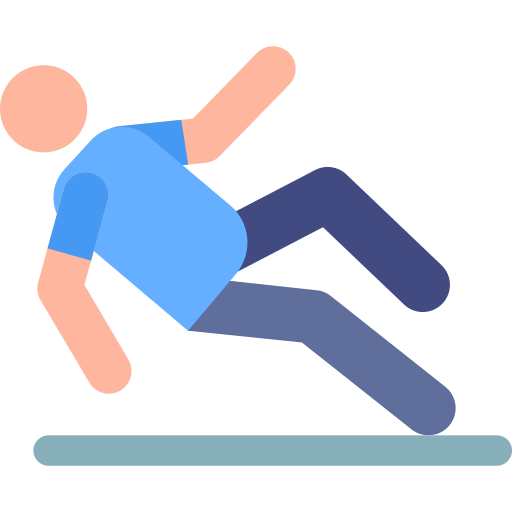
Why? It was dark and you took a misstep.
Why? The hall light wasn't working.
Why? The bulb went out and no one changed it.
Why? We didn't have extra bulbs.
Why? No one put it on the shopping list.

Solution: Keep a supply of bulbs on hand and set a reminder to replenish the supply when only a few are left.
Method 2: Change Analysis

For this method, you'll identify what changes happened leading up to the event that differ from the regular routine. Change analysis is best to use if the problem is complex or if there could be multiple causes. You may have to go back quite a bit in the timeline to find out what changed.
Questions to ask if using this method include why, how, and especially: what changed?
Example
Flyaway Airlines cancelled hundreds of flights over the busy holiday season, leaving travelers stranded and disgruntled.
 Process:
Process:
Top managers consulted with representatives from all airline departments to try to find the root of the problem.
By asking the questions "Why? How? and What changed?" they pinpointed the underlying cause: the flight crew scheduling system had been malfunctioning for the past year. When extra flights were scheduled for the holidays, it totally crashed.

Solution: Flyaway Airlines immediately upgraded the flight crew scheduling software.
Quiz
What questions could Flyaway Airlines ask during the Change Analysis process?
Change analysis aims to get at the root cause of the issue by asking questions relating to what has changed. These questions would help lead to answers. Assigning blame isn't useful and might make people feel defensive, which could in turn cause roadblocks to determining the cause.
Did you know?
Method 3: Fishbone Diagram
Draw a fish-shaped diagram
Write the problem in the "head" box
Write main categories that may have contributed to the problem in the boxes at the end of the "ribs"
Write more specific points for each category as people discuss the potential causes
Example
Nature's Farm delivers milk to 100 local grocery stores. Recently, a number of shipments were returned due to the milk being spoiled.

Process:
Managers gather and write down the problem. Now they brainstorm primary areas that could have caused the milk to spoil. These include:
Machinery
Training of personnel
Shipping procedures
Cow care
Next they add ideas of problems relating to each category. The resulting diagram might look something like this:
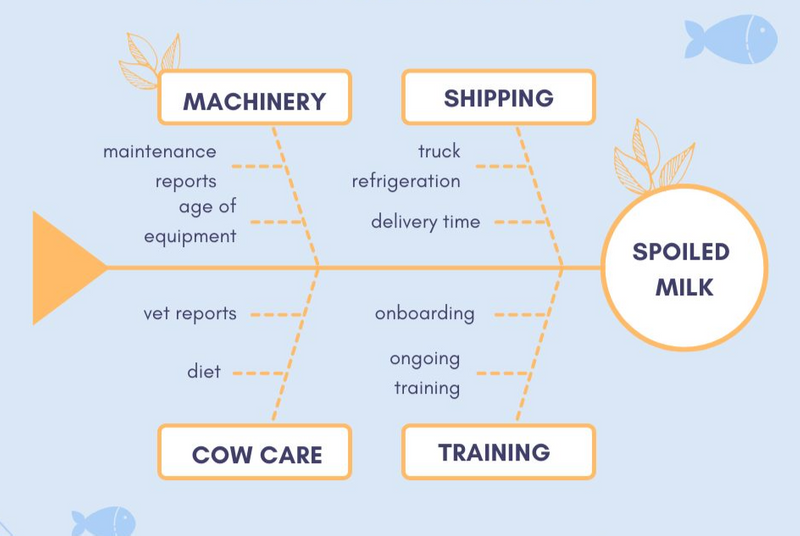
Solution: After exploring each of the possible causes, Nature's Farm determines thatthe spoiled milk was the result of new workers who weren't adequately trained to operate the machinery. They updated their new hire training process.
Did you know?
Mara's Headache
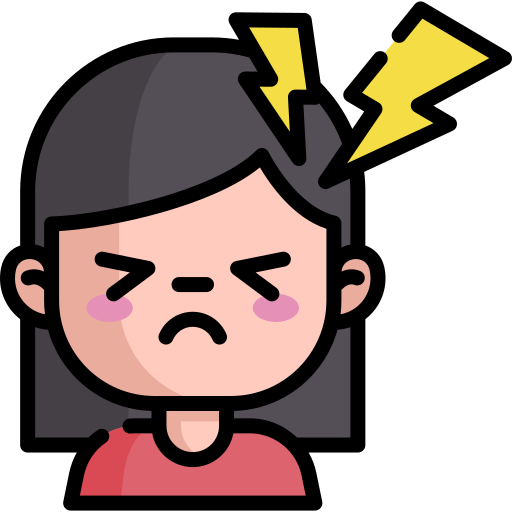
Remember Mara, who has been getting 3 PM headaches on some days? She knows it's probably not healthy to take an aspirin every day, and decides to find out what is causing her headaches by conducting a root cause analysis.
Quiz
Which root cause analysis method would be best for Mara to use? Select all that apply.
Mara's headaches could have a number of causes, so asking Why? 5 times is probably too simplistic. She could use the Change Analysis approach by tracing back to the point where the headaches began, keeping track of days when they occur, and determining what is different on the days she gets her headaches versus days she doesn't. She could use the Fishbone Diagram technique to brainstorm all of the areas that might be contributing to the headaches (for example, the main categories could be Sleep Pattern (points might be things like "only slept for 6 hours" and "slept until noon"); Meals ("ate ice cream", "skipped breakfast", etc.); and Exercise ("ran 3 miles", "rested on couch all day", etc.).
Take Action

The next time you experience a problem:
This Byte has been authored by
Mary Ellen D'Intino
Learning Designer | Licensed Social Worker
M.Ed., LSW




